
This website contains multiple games for kids, ranging from ELA to Math.
- Subject:
- English Language Arts
- Media Studies
- Science
- Material Type:
- Game
- Date Added:
- 03/25/2019

This website contains multiple games for kids, ranging from ELA to Math.

Although this free resource was developed with the state of Alaska in mind, it includes a tremendous amount of great information and strategies that apply to the teaching of reading universally. A definite must-have for your toolkit!
This playbook combines decades of nationwide research with examples and resources developed by educators in the state of Alaska. You’ll find an introduction to phonological awareness, phonics, vocabulary, fluency, and comprehension. You will also find links to valuable resources where you can continue to deepen your knowledge.
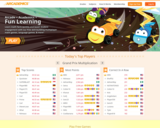
Arcademics make multiplayer educational games for students from K to eighth grade, from free math games to language games. Arcademics combines the excitement of video games with educational content to produce a high rate of learning through exciting, focused repetition that enables automaticity and fluency. All games can be played seamlessly on any device using the web browser for free.

Sign up for a 45 minute virtual field trip, and follow it up with a classroom unit about human rights and being an upstander. The classroom unit includes an inquiry project.
Virtual Field Trip:
Students will learn how to be human rights upstanders by discovering the stories of people who used their personal strengths to take a stand to protect their rights and the rights of others, creating change.
Students will:
1. Learn to identify traits all upstanders possess and understand that each of us also possess these traits in our own unique way.
2. Experience exhibits and the inspiring Museum architecture as if they were at the Museum in person.
Interact with a Museum guide and ask questions to better understand how they can take action for positive change.
3. Engage in discussion, critical thinking and reflection on their role in the protection of their own rights and the rights of others.
Classroom Unit:
The Be an Upstander resource is a project-based learning unit designed to complement the “Be an
Upstander” school program. This resource targets students in middle years and encourages inquiry and
action on human rights issues. Students will examine the traits of human rights upstanders and follow
their example. By the end of the project, students will have had the opportunity to explore an issue they
are personally passionate about, share their knowledge and lead others toward action.
The Be an Upstander website is a digital student experience designed to support student learning as part
of a larger human rights themed, project-based learning unit. Students developing upstander projects
will engage in personal inquiry and action on human rights issues that matter to them. Students will learn
about the traits of human rights upstanders, be introduced to the Universal Declaration of Human Rights
and examine their personal strengths. Following the example of the upstanders they learn about,
students will be challenged to take tangible steps to becoming human rights upstanders themselves.
If you need this resource in a different format for accessibility purposes, please contact
info@humanrights.ca.
Be an Upstander website: https://humanrights.ca/upstander/#/
Complementary teacher's guide https://humanrights.ca/upstander/#/teacher-guide

This site offers free Research-Based, Teacher-Approved Texts for supporting decoding and beyond.
How it works:
- Beyond Decodables aim to support young readers success in reading by allowing children the chance to decode words in a meaningful context.
- Use the "Beyond Decodables Scope and Sequence" chart to pick the right text for your student(s).
- Most texts are available in digital editions (projectable PDFs) and printer-friendly editions.
Sets of texts:
- CVC Words
- Consonant Digraphs
- Consonant Blends
- Long Vowel Patterns
- CVCe Words
- Multisyllabic Words

Bookopolis is a social network for kids that lets them log books and connect with other readers gr 1-8+. By creating an account, students create a virtual bookshelf and join a community of young readers who can discover new books, share book reviews and track their reading with a digital reading log. The site offers book recommendations ("Bookopolis Picks" and "What's Popular Right Now"), the opportunity to explore book reviews by other young readers, a featured book of the week, the opportunity to earn points and badges, plus the option to find books by grade (1-3, 3-6, 6-8, 8-12). You can sign in as an educator, a student or a parent. Choose the online version or download the app from your app store.
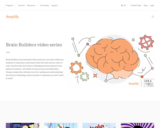
Brain Builders is an animated video series you can share with your students to help them understand what the brain does in order to read–the first time the Science of Reading has been placed in the hands of students.
Join Minh on his journey as his babysitter, Tamara, helps him cultivate a love for reading and understanding the Science of Reading. Series includes 13 episodes you don’t want to miss!
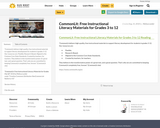
"CommonLit delivers high-quality, free instructional materials to support literacy development for students in grades 3-12. Our resources are:
Flexible;
Research-Based;
Aligned to the Common Core State Standards;
Created by teachers, for teachers.
They believe in the transformative power of a great text, and a great question. That’s why we are committed to keeping CommonLit completely free, forever." (CommonLit site)

This resource contains an abundance of ELA infused, cross-curricular lessons organized by themes for Grades 4, 5 and 6. Non-fiction, poetry and fiction reading lessons are all included.
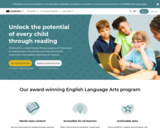
"CommonLit delivers high-quality, free instructional materials to support literacy development for students in grades 3-12. Our resources are:
Flexible;
Research-Based;
Created by teachers, for teachers.
They believe in the transformative power of a great text, and a great question. That’s why we are committed to keeping CommonLit completely free, forever." (CommonLit site)
Teachers can search for content by grade, theme, content type, genres, literary devices, and more. Alternative options are offered for students that may require adaptations for reading an easier level.
Parent guides are also provided.
Benchmark and ongoing assessments are available.
360 Curriculum provides full integrated units E.g., Unit 1 Characters Who Change and Grow which includes a baseline assessment, vocabulary activities, reading lessons, writing lessons, quiz, grammar activities, media exploration, discussion, and a culminating task.

Students in grades 4-6 engage in a series of activities (both inside and outside the classroom) designed to inspire a sense of environmental stewardship. Each of the activities is intended to have children explore their profound connection to nature and experience the power of individual and collective action.
Students explore the daily choices, they, their families, their school and their communities make; the impact of those choices on nature; and the role they and others may take in protecting nature.
The activities are fun, hands-on, and thought provoking. Students have opportunities to share what they are learning with their fellow students, family, and community and to create their own “class foundation” to collectively act on their concerns and passions.
The resource consists of 16 cross-curricular lessons on a range of issues from which teachers may select according to the dictates of their time and curriculum.

As this is a living free resource, you are required to enter your email so that you can receive updates as they happen.
When reviewing curricula for Tier I instruction, it is essential to ensure they do not include instructional practices that are not aligned with the scientific evidence base of how children learn to read.
The Curriculum Evaluation Guidelines are designed to highlight any non-aligned practices, or “red flags,” that may be present in the areas of:
- Word Recognition
- Language Comprehension
- Reading Comprehension
- Writing
- Assessment
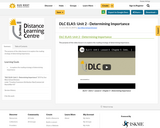
The purpose of the video lesson is to explore the reading strategy of determining importance.
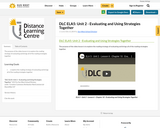
The purpose of the video lesson is to explore the reading strategy of evaluating and brings all of the reading strategies together.
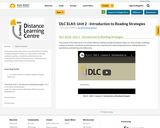
The purpose of the video lesson is to outline effective reading strategies that good readers use. They include: predicting, making connections, visualizing, monitoring your own comprehension, determining importance, making inferences, questioning, summarizing and synthesizing.
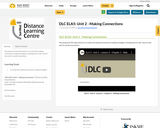
The purpose of the video lesson is to review the making connections reading strategies, including text-to-self , text-to-text, text-to-world connections.
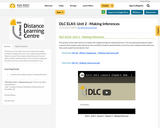
The purpose of the video lesson is to explore the reading strategy of making inferences. The accompanying handouts (1)give scenarios that students make inferences from and (2)has students identify details or facts from the reading and the inferences that can be made from the detail or fact.
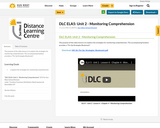
The purpose of the video lesson is to explore the strategies for monitoring comprehension. The accompanying handout provides a "Fix-Up Strategies Bookmark".
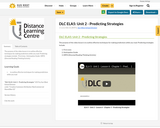
The purpose of the video lesson is to outline effective techniques for making predictions while you read. Predicting strategies include:
-First Lines
-Anticipation Guide
-DRTA (Directed Reading Thinking Activity)
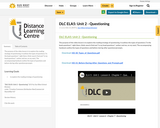
The purpose of the video lesson is to explore the reading strategy of questioning. It outlines the types of questions ("in the book questions": right there, think-search-find and "in my head questions": author and me, on my own). The accompanying handouts outline the types of questions and before-during-after questions/prompts.